Organic vs inorganic soil components for bonsai play a pivotal role in determining the health, growth, and aesthetic appeal of these miniature trees. The soil serves as the foundation of any bonsai, supplying vital nutrients, anchoring the roots, and ensuring proper water retention and drainage.
While bonsai cultivation has witnessed various soil practices over the centuries, the debate between using organic and inorganic components remains one of the most discussed topics amongst enthusiasts.
This ongoing conversation is rooted in the rich historical evolution of bonsai soil mixes, reflecting the dynamic nature of bonsai care and the continuous quest for perfection by its practitioners.
Organic Soil Components For Bonsai
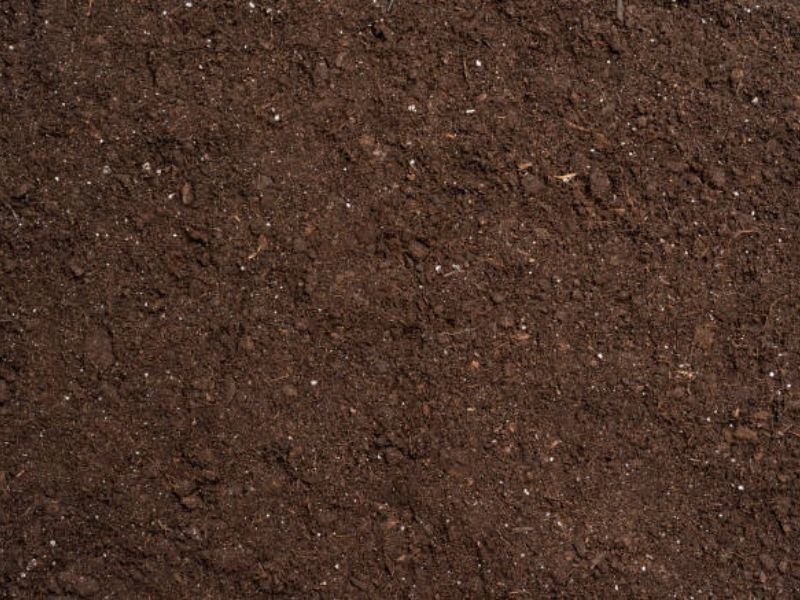
Organic soil components are derived from once-living materials, including decomposed plants, animal matter, and other natural sources. These components break down over time, releasing essential nutrients into the soil, thereby enriching it.
While gardeners are familiar with the ubiquitous organic potting compost—usually made up of peat moss, composted bark, and other organic matter—bonsai cultivation demands a more specialized approach.
Organic bonsai soil, though rooted in the same principle, is curated to cater to the specific needs of bonsai trees. This may involve combining standard organic elements with certain inorganic ones to ensure optimal growth conditions.
Pros Of Using Organic Soil Components
Rich Nutrient Content
One of the main advantages of using organic soil is its nutrient-rich nature. As the organic matter breaks down, it provides a steady stream of essential nutrients that are vital for bonsai growth. This continuous nourishment can lead to vibrant foliage, robust growth, and an overall healthy tree.
Improved Soil Structure
Organic soil components can enhance the soil’s texture and structure. A good organic mix will offer a balance, ensuring that the soil is neither too loose nor too compact. This balance aids in root spread and growth, creating a strong foundation for the bonsai.
Beneficial Microbial Activity
Organic soils are teeming with beneficial microorganisms. These microbes break down organic matter, facilitating nutrient absorption by the roots. Additionally, they help suppress harmful pathogens, providing a natural line of defense against certain diseases.
Cons Of Using Organic Soil Components
Excessive Water Retention
One of the main challenges with organic soils is their tendency to retain water. While moisture is essential for plant growth, an oversaturated soil mix can lead to root rot—a detrimental condition for bonsai trees.
Soil Compaction
Over time, especially if the organic matter content is high, the soil may become compacted. Compacted organic soil can hinder root growth and reduce aeration, which is crucial for root health.
Decomposition And Instability
Organic matter breaks down over time. This decomposition, while beneficial in releasing nutrients, can make the soil unstable. As a result, bonsai enthusiasts might find themselves repotting or adjusting their soil mix more frequently.
Inorganic Soil Components For Bonsai
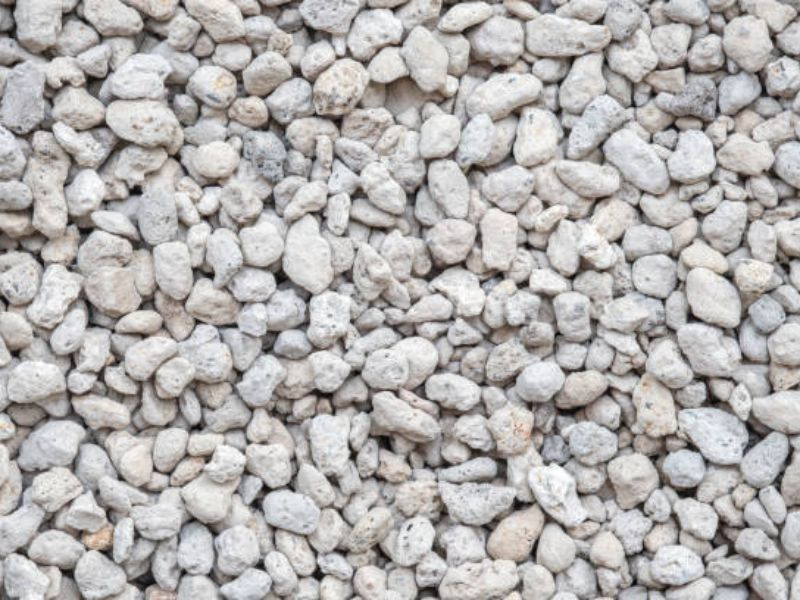
Inorganic soil components refer to materials that have not originated from living organisms. They are typically mineral-based and do not decompose like organic materials.
Essential in creating a well-draining soil mix, inorganic components often become the primary choice for many bonsai enthusiasts. Some of the most popular inorganic elements include pumice and lava rock, along with various aggregates.
Pumice, a volcanic rock, is prized for its lightweight nature and excellent water retention. Lava rock, another volcanic derivative, ensures good drainage and aeration. Other aggregates, like grit or expanded shale, can be added to further improve the soil structure and drainage properties.
Pros Of Using Inorganic Soil Components
Excellent Drainage And Aeration
One of the standout qualities of inorganic soils is their ability to provide superior drainage. This is crucial for bonsai health, as the roots need oxygen just as much as they need water. Well-draining soil ensures that the roots are not submerged in water for extended periods, reducing the risk of root rot.
Durability And Longevity
Inorganic components, by their very nature, do not break down over time. This means that the soil structure remains consistent, reducing the need for frequent repotting. It also ensures the longevity of the soil mix in the bonsai pot, making it a cost-effective choice in the long run.
Cons Of Using Inorganic Soil Components
Absence Of Organic Nutrients
The most notable drawback of using purely inorganic soil components is the lack of organic nutrients. Bonsai trees, like all plants, require a range of nutrients to thrive. Inorganic soils, devoid of decomposing organic matter, won’t naturally supply these nutrients.
Thus, bonsai caretakers may need to supplement with fertilizers or incorporate some organic components into their inorganic mix.
Crafting The Ideal Bonsai Soil Mix
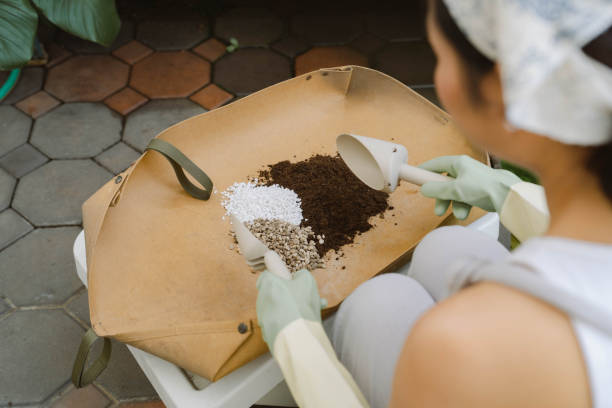
Crafting the perfect bonsai soil mix is both an art and a science, a harmonious blend of understanding your tree’s needs and applying botanical knowledge. Each bonsai tree species is unique, and the soil it thrives in can be just as individual.
Here’s a comprehensive guide on creating that ideal mix.
Blending Organic And Inorganic Components
Marrying the nutrient-rich properties of organic soil with the drainage benefits of inorganic components creates a balanced and conducive environment for bonsai growth. While organic components offer a slow release of nutrients, inorganic components ensure that the soil allows for good aeration and does not retain excessive water. Finding the right balance is crucial.
Strategic Benefits Of A Well-Balanced Mix
A well-blended bonsai soil mix ensures that the tree has a steady supply of nutrients, proper drainage, and aeration. It also means fewer instances of root rot and a healthier root system, which translates to a thriving bonsai.
Tailoring Soil Mixes
Different bonsai species have varying requirements. For example, a Juniper might prefer a mix with higher inorganic content for better drainage, while a Ficus might benefit from a slightly more organic-rich mix. Understand the natural habitat of your bonsai species and try to mimic those soil conditions.
Influence Of The Bonsai Pot
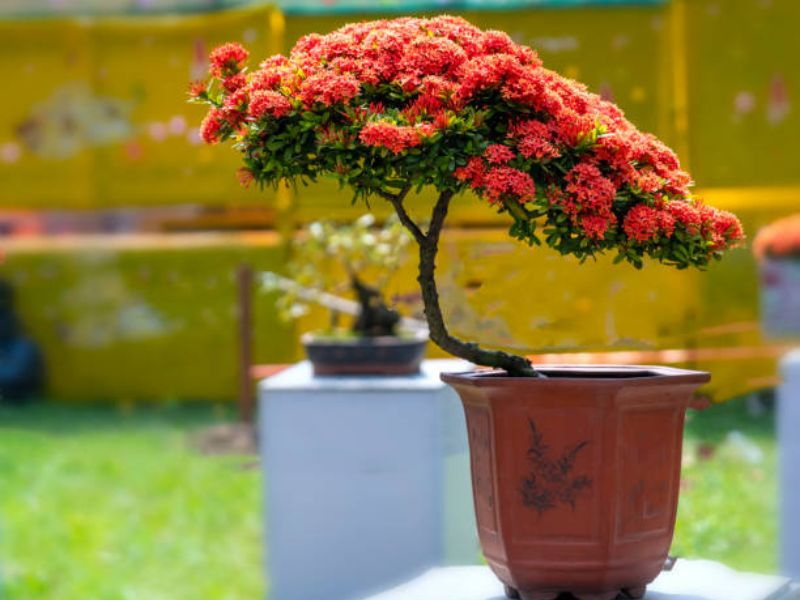
The design and size of the bonsai pot play a significant role in determining soil composition. Shallow pots might require a faster-draining soil, while deeper pots can handle a mix that retains water a bit longer. Always make sure the pot has adequate drainage holes.
Monitoring And Measuring Water Content
It’s essential to understand the amount of water your soil retains. One can gauge this by feeling the soil’s moisture a few centimeters below the surface or using moisture meters available in gardening stores. A well-draining soil will feel moist but not wet.
Regular Adjustments And Observations
The journey of bonsai cultivation is one of learning and adapting. Regularly monitor your tree’s health, growth rate, and leaf color. If something seems off, consider tweaking your soil mix. Always remember: observation is key.
Examples Of Bonsai Soil Mixes
- Deciduous Trees: A mix of 60% organic potting compost, 20% pumice, and 20% lava rock can be ideal. Deciduous trees like maples and elms prefer this balance, offering them the nutrients they need while ensuring good drainage.
- Conifers: These might require a more draining mix, such as 40% organic soil, 30% pumice, and 30% lava rock.
Blending, testing, and adjusting your bonsai soil mix is a rewarding journey, and the joy of seeing your bonsai thrive in its perfectly crafted environment is unparalleled. A good soil mix is pivotal to this success.
Finding Your Bonsai’s Perfect Balance
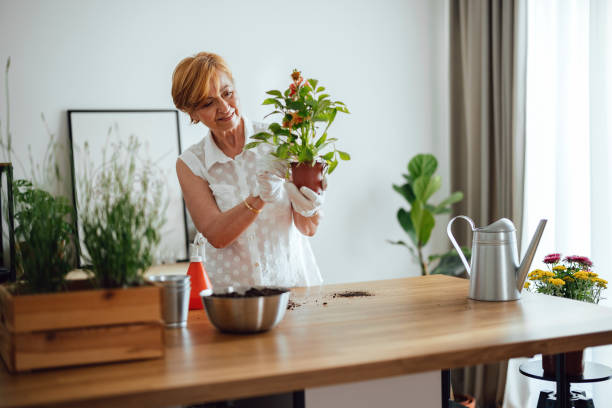
Understanding soil components for bonsai is crucial, as every bonsai tree is unique, and while there are standard guidelines, the perfect soil balance often requires personal experimentation. Over time, tending to your bonsai will unveil its needs.
Maybe the leaves hint at a soil mix that’s too water-retentive, or perhaps they suggest the need for quicker drainage.
Adjusting the ratios of organic or inorganic components in your soil mix can lead to significant changes in your bonsai’s health.
Consider the potting soil structure and repotting frequency as additional factors in this balancing act. While soil mix is essential, also account for watering, sunlight, and pruning in your bonsai care routine.
Delve into the art of bonsai, experiment fearlessly, and with patience, you’ll discover the unique balance that lets your bonsai flourish.





0 Comments